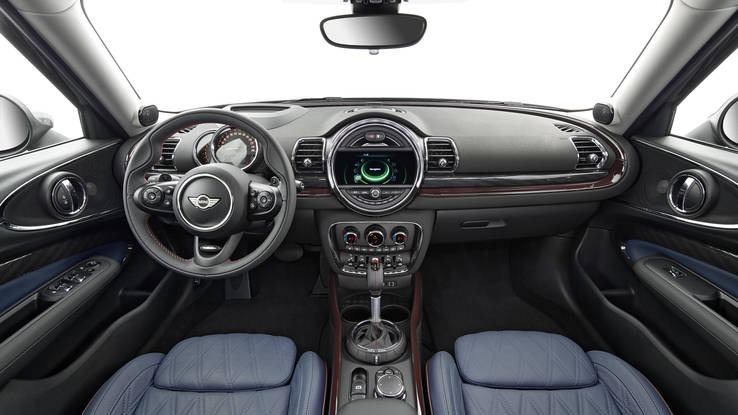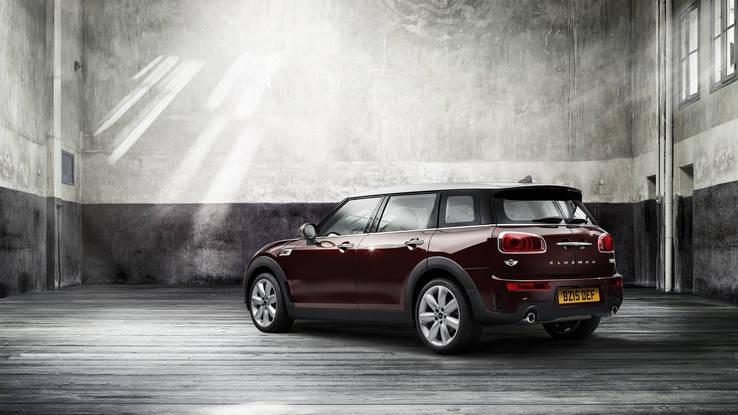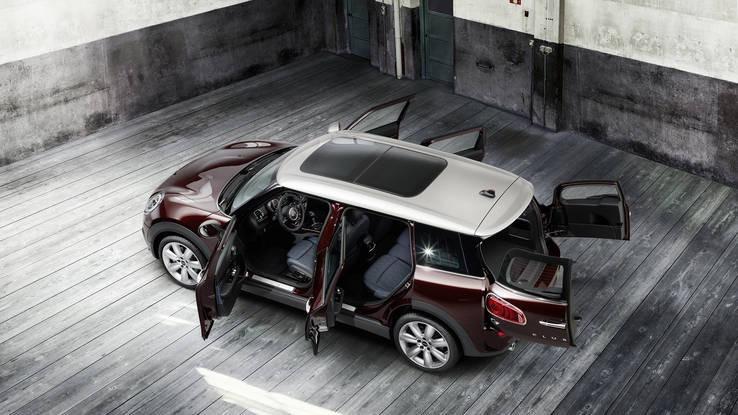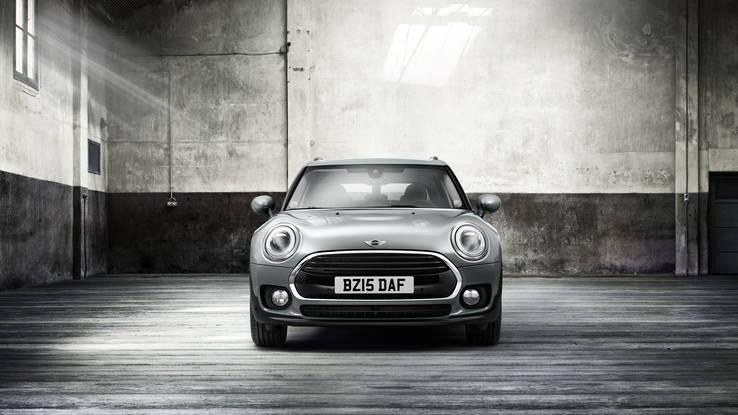Bigger Mini retains its cute little personality
What is it?
Mini has been a staple of the subcompact sales segment since BMW revitalized the brand in 2002. The newest addition to the Mini fleet is the company’s first true leap into the bigger compact car segment. While the Mini might have always seemed like a compact car, it actually is a step smaller, a subcompact — meaning the step towards compact is actually sizing up. Though it may seem large compared to its smaller siblings, it’s actually about the size of the VW Golf.
It’s also had the traditional Mini quirks toned down. The massive center-mounted speedometer and frustrating console-mounted window switches are gone, and these items have been moved to conventional places. However, a Mini wouldn’t be a Mini without a massive circle in the middle of the dash — this time it’s just an LED ring surrounding the infotainment screen. In automatic trim, the ring can change to a variety of colors, but with the manual transmission-equipped Clubman, the ring becomes another tachometer.

Obviously the major perk of sizing up is increased cargo space, but how much bigger is the Clubman compared to the rest of the Mini lineup? Well, cargo space with the seats up is only 17.5 cubic feet, but after dropping the 60/40 split seats forward, that number jumps to 47.9 cubic feet. That is 6 more feet in total space compared to the former top dog Countryman. Though, that space doesn’t mean pleasant rear-seating for taller passengers. The sloping wagon-esque top profile is attractive to look at, but causes problems with passenger headroom — simply put, if you’re taller than 6 feet, you won’t fit. Your legs will fit just fine, thanks to the sculpted seat-backs of the front seats, but your head will either be cocked to the side, or you’ll be slouching in order to avoid constant contact with the headliner.
Accessing the cargo space is done through a pair of “barn doors” that call back the heritage of the Clubman. Opening the doors is as easy as punching a button, or going to the rear of the car and kicking at the bumper — motion sensors detect the kicking motion and also senses if the key is present. While this isn’t a groundbreaking feature, it is a nice novel touch. It’s also handy if you have your arms full with groceries or TVs, or are just too lazy to push a button.

How does it drive?
While the rest of the latest Mini is on the edge of normal, it still drives decidedly like Mini should — agile and sporty. The models are split by engine choice: a turbocharged I3 fits under the hood of the regular Cooper, but a turbocharged I4 powers the Cooper S.
The base Cooper sports a turbocharged 1.5-liter I3 producing a modest 134 hp at 4,400 rpm. However, the 162 lb-ft of torque at 1,250 rpm moves the Clubman along well. Power is linear, despite the turbocharger, and feels powerful even in top gear. The 0-60 time is a paltry 8.9 seconds, but the optional six-speed automatic is available with paddle shifters — and the Clubman is a time when we’d suggest them. Only because the transmission is surprisingly great. Shifts, both up and down, happen nearly instantaneously and are firm enough to remind you that you’re in a sports car. Though, even as nice as the auto is — we would ultimately recommend the manual version if you want total control.

The Cooper S relies on a turbocharged 2.0-liter I4 to bump the horsepower to 189 hp at 5,000 rpm and torque is up to 207 lb-ft. The automatic adds two extra gears for the Cooper S making it an eight-speed, but the manual sticks to six. The extra power might not seem like much, but it is a dramatic increase compared to the base Cooper. Unlike the I3, the I4 produces enough power to easily overpower the tires in first and second gear. The 0-60 time is just under 7 seconds at 6.9 seconds.
Power figure aside, the low center of gravity, compared to the Countryman gives this large Mini the feel of its smaller siblings despite a relatively portly curb weight. The brakes are responsive and firm, and dive is minimal under heavy braking. The same rings true for body roll — in corners this Mini stays nice and flat. Visibility could be a problem for some, due to the back window being heavily obstructed, but anyone that’s driven a courier van would know that isn’t a deal breaker.

Do I want it?
To the dyed-in-the-wool Mini fans, the Clubman will be well received. For the car-buying public, the Clubman could be a hard pill to swallow compared to the other sporty compacts on the market. The Ford Focus ST and the Volkswagen GTI are the two heavy hitters in the small but fun-to-drive hatchback world, and anyone looking for a something small that’s capable of hauling stuff will probably look at these two first. Not helping that problem is the price: a base Cooper rings in at $ 24,950, and the Cooper S is $ 28,500, right in line with the GTI and Focus ST.
What the Mini does offer over its competition is individualization. Mini says there are over 10 million different ways you can order a Clubman — not the case for its competitors, and a key consideration for the Mini loyalists likely to make up the bulk of Clubman buyers. But those looking for peak hot-hatch performance would be better served elsewhere.




























